#this is more for me but ik other people have struggled finding refs
Text
Astarion renders from Art Station to use as reference :)
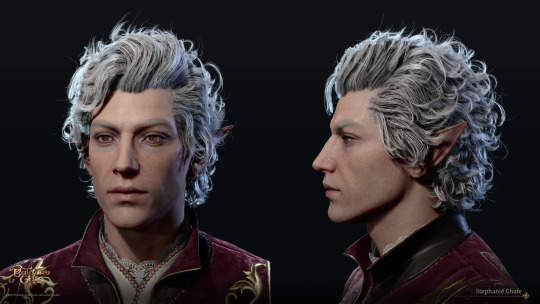
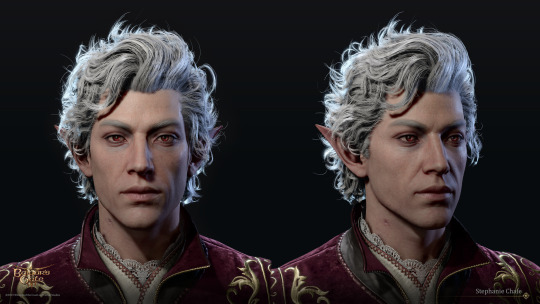
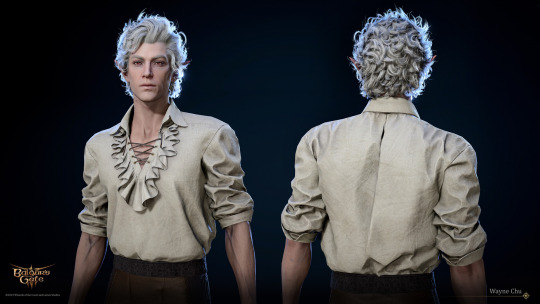



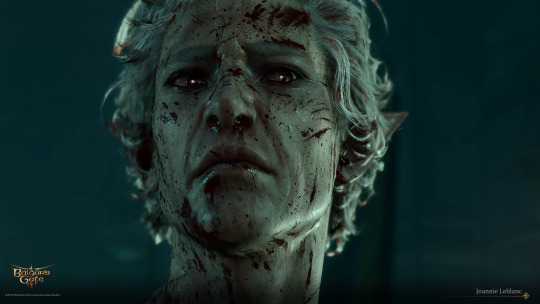
#Posting the other main characters and a misc post for side characters#I've been having the game run while I stare at the character models so lol#this is more for me but ik other people have struggled finding refs#enjoy :)#Reference sheet#kinda#art references#model references#Badlur's gate 3#Baldurs Gate 3#Bg3#astarion#bg3 astarion
133 notes
·
View notes
Note
oh wow i haven’t been on tumblr in so long bc mobile is shit but how tf did i forget abt ur art ??? fukcin blows me away wow. any tips on anatomy for a rly bad artist? ik practice, but i get so frustrated when it doesn’t look like what i see in my head :(
yeah lol mobile on tumblr sucks major ass now. i cant even publish drafts on there. and im in the same boat wiht you on anatomy lmao. it might look like i know what im doing, but sometimes not really. maybe im just good at deceiving ppl on the way i draw when its kinda inaccurate
anyway, i also struggle with never really composing the shit i want, and even i tell myself to go practice anatomy but im never really granted a lot of time in my life, so i gotta make use of whatever i can find whenever i draw.
this post is actually long, so if you just want anatomy resources, you can check these out:
stuff that i made tutorials/tips on: torso/hands/pose
these are all very condensed tutorials/tips, so a lot of this is just collection of stuff that i’ve learned/noticed from others. this might be helpful, but idk man
here’s a list of other resources for anatomy/any other refs
this one was mentioned in the list, but its easily looked over: posemaniacs, it has different modes you can try out (timed/casual study), and its good for practicing foundations in anatomy. i paid more attention to this one when i saw a twitter post of it
bodies in motion is a site you can also use. it has a catalog of images to see people acting something out, and you get to see all the frames of it occurring. even though you’re just looking at images, its still a reference to learn how arms, legs, or torsos move B^) its a good way to pay attention to the smaller details like the various muscles in bodies
and honestly, check out what other ppl say too. there’s a lot of artists out there who might’ve already wrote some shit that i mentioned or have new info that i never thought about. just type in “anatomy/art tips” into any kind of search bar and you’re sure to find something useful at some point. but main takeaway i really want you to have is to seriously study from life. dont do it based on memory or anything. there’s no other general advice that i can really give besides 1) practice 2) study from life 3) dont stress out and take your time. if you want me to give a specific tip/tutorial on a body part, i can try, but the amount of depth i can give is really based on my own knowledge of it
now for the 2nd part of this post:
COMPOSING SHIT OR MAKING STUFF LOOK LIKE WHAT YOU EXPECTED IT TO LOOK LIKE:
“i get so frustrated when it doesn’t look like what i see in my head :(“
i suck at it, whoever is reading this prob sucks at it (and they secretly know it too) we all gotta start somewhere. you’re kinda asking for composing stuff while also anatomy tips, but its kinda broad, so lemme mention something about composition:
use perspective grids or at least practice using them first. the best way to understand how things are supposed to look is also based around the way you’re trying to see it in, like a certain angle of some sort. here, lemme give an example where i drafted a sketch a lot:
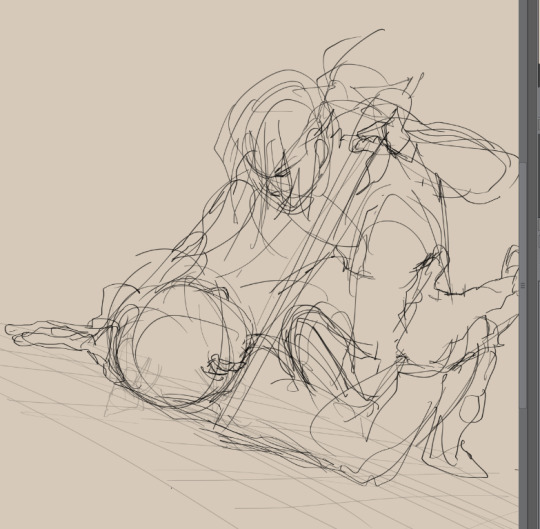
ok cool, got a pose i want, got the general idea, niiiiiiiiiceee. but i didnt think it was good enough, but i still managed to plan out a pose anyway with that grid on the bottom. it helped me gain a focus on how these characters were supposed to lay down on the ground, but it still wasnt good enough yet. character on top was facing their right instead of the person in front of them, which wasnt what i wanted.
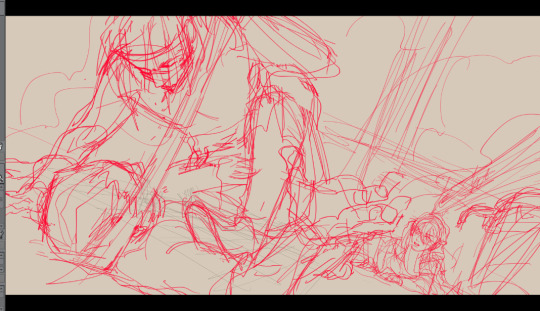
then i sketched it again. this time the “camera” of the scene was more based around the front of the characters rather than the side, and now the character is looking at the person below them. but wait, it wasnt good enough yet. i didnt like how relaxed their position looked.

i changed the position of the character to make it seem more convincing that they were pressing hard into the ground and possibly sneering at the person below them. they held dominance over the person simply based on the way theyre positioned in the scene. the way people move suggests a lot about what is happening in the scene and what might be apparent about their character. i was able to make a pose i wanted with the help of a perspective grid, and it really does help at times. use perspective grids to help you out with making anatomy. also, dont forget that what you learn from simply observing how bodies work can help you out with giving clues to how the bodies should look at a certain angle
but am i a master at using perspective grids? no, lol. i always have to make several perspective grids while i draw as a way to convince myself that i really am drawing my shit right.
some of the resources i listed lean into something related to perspective, so there’s that. there’s definitely tutorials out there to understand how to use perspective grids, so i suggest you search those up too. there’s a program called carapace thats specific for creating perspective grids, but im not sure where the original download site is, but if you want to know what it looks like or where to download it, google is your friend. if you use digital media and your drawing software offers a perspective grid function, then i highly suggest you learn how to use it.
i wouldnt say that there’s a specific thing you need to learn first (i.e. learning perspective before anatomy), but if you want to just simply learn how to draw anatomy, then go ahead and find whatever you can. if you wanna create some cool ass poses with some interesting perspective shots, then take what you learn from anatomy and apply it to how you practice your perspective shots or vice versa. there’s a lot of variety in what you can do and how you can do it simultaneously with something else to learn something out of it B^)
163 notes
·
View notes